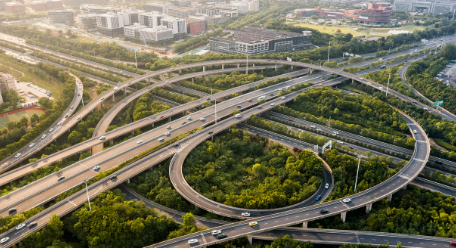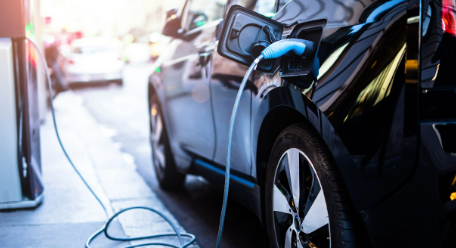BMW, the German automaker, recently launched the first premium car fitted with 5G wireless connectivity as standard. The technology means that the BMW iX is linked to the internet and can upload and download data quickly.
The 5G car is the latest example of what the automotive industry calls ACES mobility, which stands of Autonomous, Connected, Electric and Shared. The concept uses the Internet of Things, and IT architecture in which smart products talk to each other to optimize performance.
Anticipated reach of 5G coverage
% of world population
 Source: Ericsson Mobility Report, 2021
Source: Ericsson Mobility Report, 2021
Manufacturers are incorporating 5G connectivity into the entire lifecycle of cars, says Parm Sandhu, Enterprise 5G products at NTT, a global technology and business solutions company. “This goes from the factory floor through to enhancing the customer experience and safety, while making servicing easier, faster and safer,” says Sandhu. “Organizations want security, control, flexibility and access to the data. These four factors are the key drivers we see right now.”
NTT is using its expertise to facilitate this transformation. It is deploying private 5G networks, while using its global partnerships to unlock access to public 5G networks. Sandhu explains the difference between private and public networks: “Private 5G networks are installed into a company’s premises, for instance, a car factory, for their sole use.” This allows for new digital transformations of processes with heightened security and efficiency. “Once on the road, public 5G networks keep the cars connected to the manufacturer, giving them the ability to monitor and improve the customer experience,” he says.
Such networks could allow drivers to download better real-time traffic information to make trips more efficient and find the closest available parking spaces. And it is not only motorists who will benefit. The next generation of infotainment services based on 5G will allow car passengers to stream sport and films or join conference calls. “The future is hyperconnected cars. With 5G, we see that future starting to happen,” says Gustavo Filip, Global Automotive at NTT DATA. “But we are only at the beginning.”
The future is hyperconnected cars. With 5G, we see that future starting to happen
 Gustavo Filip, Global Automotive at NTT DATA
Gustavo Filip, Global Automotive at NTT DATA
The benefits of connected cars go beyond better bandwidth for existing applications such as navigation, Filip says. “It is not just the hyperconnected car – it is the ecosystem around the car that will give us new opportunities. Vehicles will communicate with the wider world, including highways, pedestrians and other cars.”
Expected growth of subscribers to automotive embedded telematics services worldwide
 *This number is projected to grow in the following years at a compound annual growth rate (CAGR) of about 19 per cent.
Source: Ericsson Mobility Report, 2021
*This number is projected to grow in the following years at a compound annual growth rate (CAGR) of about 19 per cent.
Source: Ericsson Mobility Report, 2021
The technological revolution extends to parking, too; NTT DATA showcased its automated valet parking system at the Munich motor show in September. The driver and passengers leave the car at the entrance to the parking garage, and the car’s 5G system takes over, talking to the garage’s computers to park the car. A total of 22 cameras help steer the car into its space. Such systems would allow car park owners to maximize valuable space. Since no pedestrians go into the parking area, the technology can park vehicles closer to each other.
The market for connected cars is predicted to be worth over
USD 215 billion
by 2027
Source: World Economic Forum, 2021
“There will be lots of new approaches like this,” Filip says. “Everything related to the mobility of vehicles will interact with the car, from charging stations and parking to washing and maintenance.” Better connectivity will reduce congestion and emissions and create a better driving experience, according to the 5G Automotive Association, which brings together companies from the automotive, technology and telecommunications industries. The association says safety will be improved by the fast flow of information between vehicles, pedestrians and road infrastructure. “This will enable connected vehicles to anticipate and avoid dangerous situations, reducing collisions and potentially saving lives,” it says.
Private 5G networks* are expected to increase 10-fold by 2028
 *Private 5G networks offer the latest standards in wireless tech, with more options for customization and control
Source: Private 5G Here and Now report, 2021
*Private 5G networks offer the latest standards in wireless tech, with more options for customization and control
Source: Private 5G Here and Now report, 2021
Cities of the future will depend on computer systems that can send and receive data to thousands of cars per square mile in real time. While NTT’s parking valet can relay messages in under 10 milliseconds, Filip says that trying to achieve a fully automated junction will be a different matter. In a complex and extremely data-heavy scenario in which traffic lights are replaced, even the fastest current 5G network would struggle to cope. “In 10 years or so, we could have holographic applications with much more data capacity,” Filip says. Experts already look forward to faster connectivity than even 5G – including 5G+ and 6G. Eventually, however, engineers will come up against a technical ceiling. IOWN (Innovative Optical and Wireless Network) can address this challenge through all photonics networks and AI.
Experts already look forward to faster connectivity than even 5G – including 5G+ and 6G. Eventually, however, engineers will come up against a technical ceiling. IOWN (Innovative Optical and Wireless Network) can address this challenge through all photonics networks and AI

“To get more capacity, we increase frequency. But at higher frequencies, we have problems with the infrastructure,” Filip adds. There is also an issue in urban areas where large buildings can block signals. Taro Nakao, Global Telecom at NTT DATA, says IOWN will address significant societal issues. “Our vision is to address energy consumption, the sustainable use of resources and digital wellbeing,” Nakao says.
IOWN research will take technology beyond its current capacity

All Photonics Network
Using all photonics platforms for extremely high capacity, low latency and significant power reduction.

Digital Twin Computing
Enabling better predictions and actions by creating real-time virtual twins based on massive amounts of data.


Cognitive Foundation
Coordinating and connecting real-time data, networks and computing to support new levels of technology breakthrough.
While conventional computers use electronic circuits, the IOWN concept is based instead on manipulating light. This approach, also known as photonics, could offer 100 times less power consumption, 125 times higher capacity and low latency. Crucially, it could allow millions of connected cars to communicate with control systems and each other.
“Imagine we point at a specific car with a laser,” Filip says. “It doesn’t work quite like that, but you can see that it is much more efficient than broadcasting what are radio signals to everyone at the same time.” With this technology, satellites and drones could even be used to receive and send data through optical networks. That could be a way to massively expand connectivity beyond 5G to vehicles outside cities and away from main roads. “That’s where IOWN technologies will make a big difference,” Filip concludes.
This content was paid for and produced by NTT in partnership with the Commercial Department of the Financial Times

